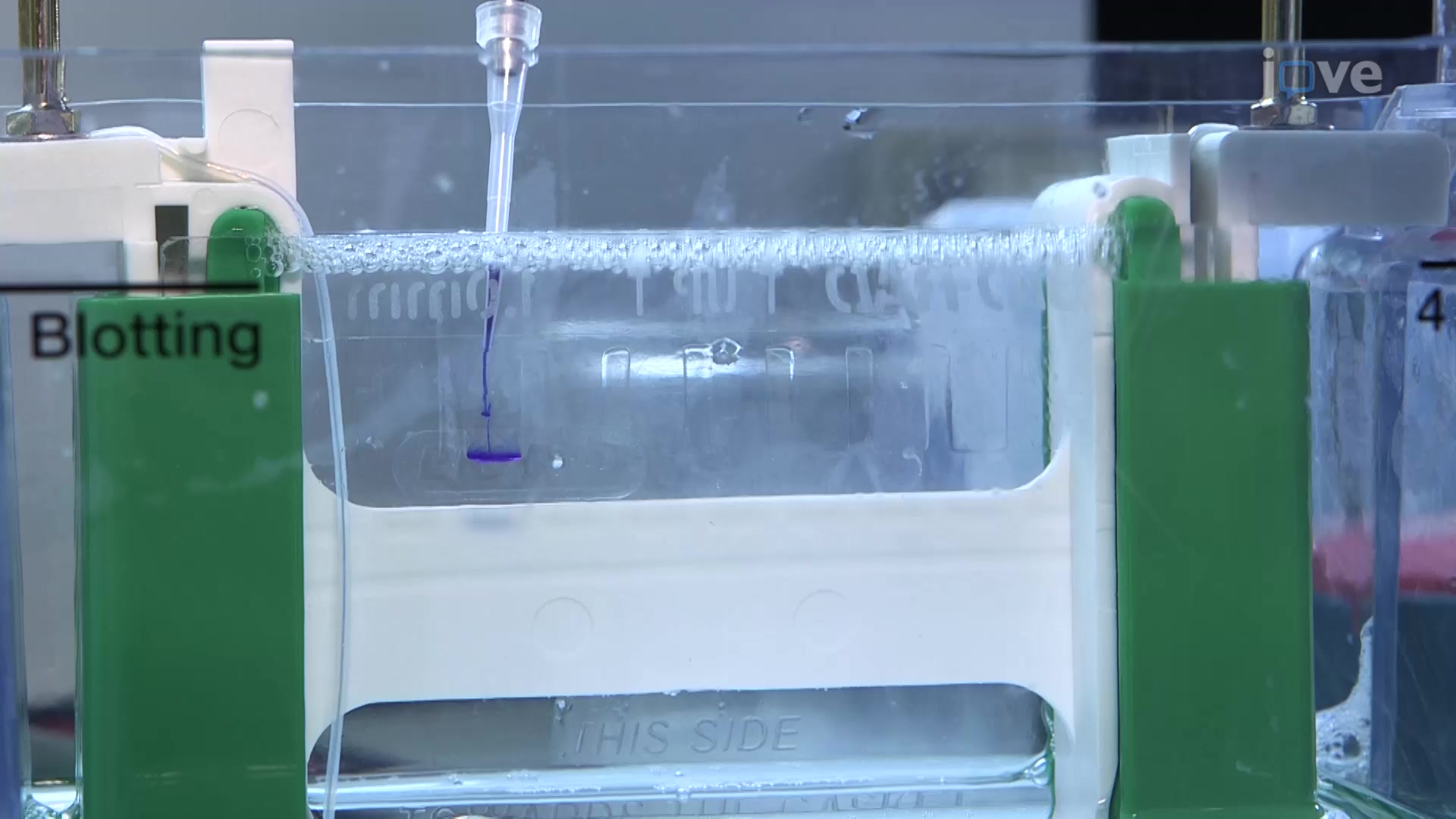Encyclopedia of Experiments: Cancer Research
A subscription to JoVE is required to view this content. Sign in or start your free trial.
Transcript
To begin, take a tube containing intact extracellular vesicles or EVs.
Suspend the EVs in the desired volume of lysis buffer and sonicate the sample. This treatment lyses the EV membrane and shears the genetic material, releasing the proteins into the buffer.
Centrifuge to pelletize the cell debris and sheared genetic material. Collect the supernatant containing various proteins.
Add a loading dye to the protein extract and run it on an SDS-PAGE gel.
Soak the gel in a staining solution to allow the dye molecules to bind proteins. Locate the stained band containing the desired protein and excise it.
Cut the colored band into small pieces to improve the accessibility of proteins to enzymes in the subsequent steps. Transfer these pieces into a microcentrifuge tube.
Add a destaining solution that removes the staining dye. Remove the spent destaining solution.
Add a reduction solution. Incubate to allow the reducing agent to cleave the disulfide bonds in protein, exposing the free sulfhydryl groups.
Treat the reduced proteins with an alkylating solution. The alkyl groups bind to the free sulfhydryl groups, keeping the protein unfolded.
Discard excess solution and wash the pieces with a dehydrating solution to remove the alkylating reagent. Dry the gel completely.
Gel pieces are now ready for further proteomic analysis.



